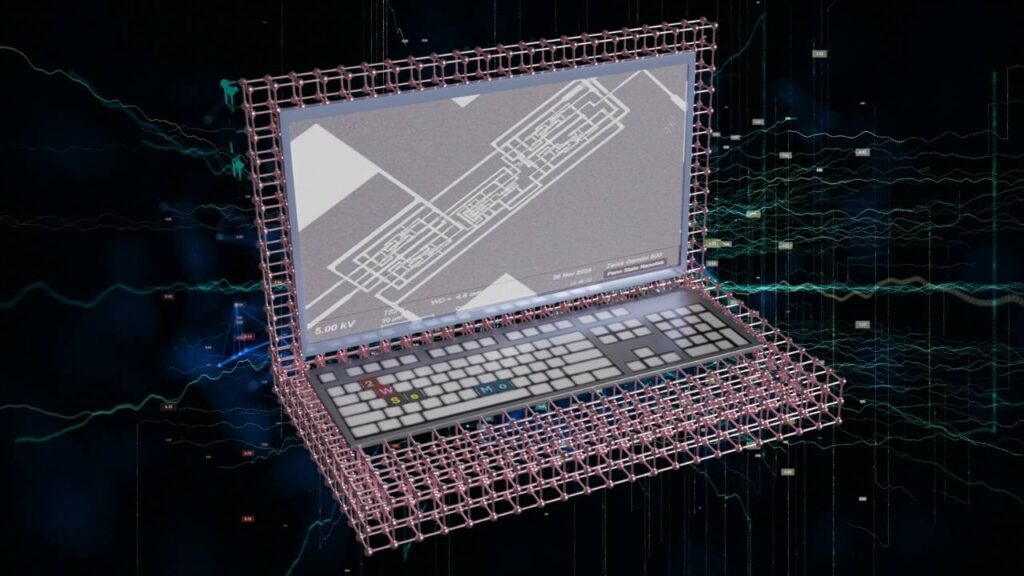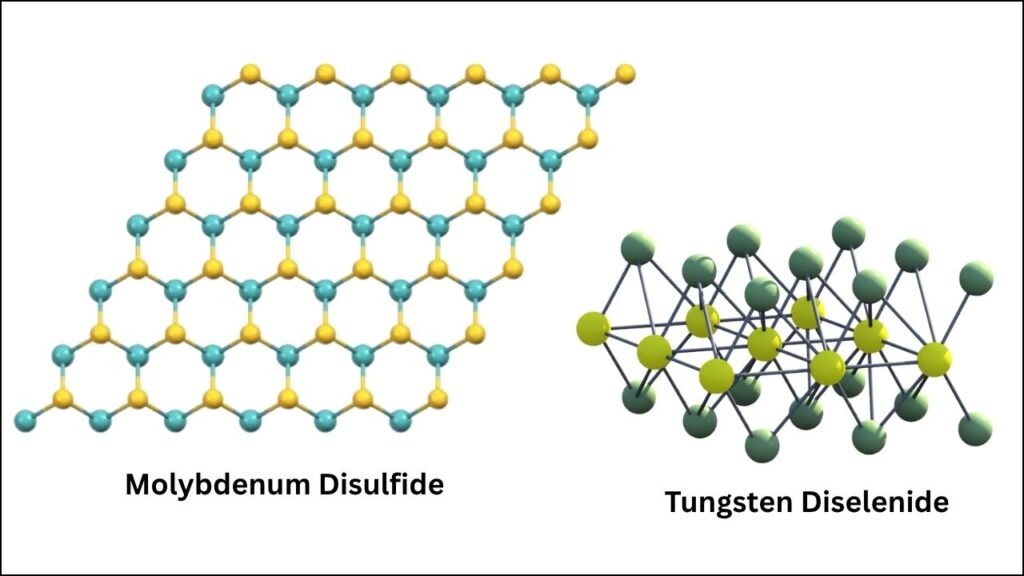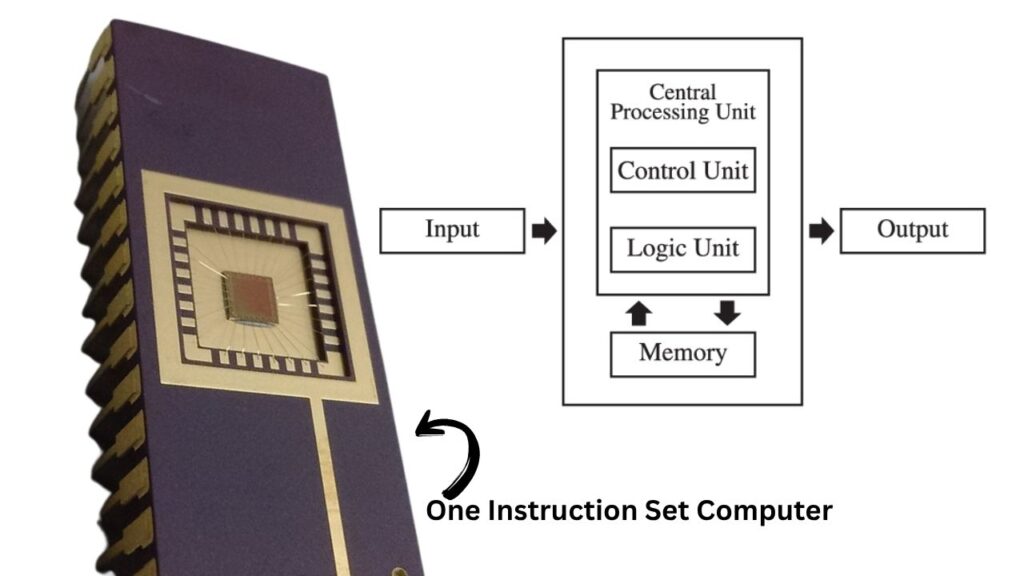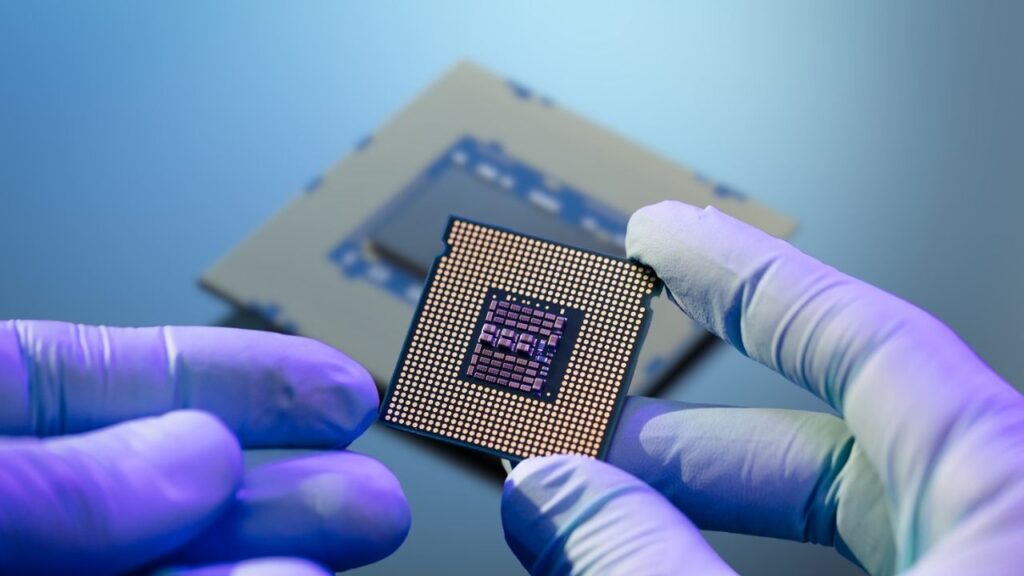World’s First Silicon-Free Computer Built With 2D Materials: In a groundbreaking achievement that could redefine the future of electronics, researchers at Penn State University have built the world’s first silicon-free computer using two-dimensional (2D) materials. This milestone represents a major leap forward in semiconductor technology, demonstrating that it is possible to create a fully functional computer without relying on silicon—the material that has powered every digital device for decades.

The new computer, developed by a team led by Professor Saptarshi Das, is based on the same complementary metal-oxide semiconductor (CMOS) technology found in smartphones, laptops, and countless other devices, but with a twist: instead of silicon, it uses ultra-thin, atomically thin materials called molybdenum disulfide (MoS₂) for n-type transistors and tungsten diselenide (WSe₂) for p-type transistors. This innovation opens the door to thinner, faster, and more energy-efficient electronics, with potential applications from artificial intelligence to flexible, wearable gadgets.
World’s First Silicon-Free Computer Built With 2D Materials
| Feature/Statistic | Details |
|---|---|
| Institution | Penn State University |
| Lead Researcher | Professor Saptarshi Das |
| Materials Used | Molybdenum disulfide (MoS₂), tungsten diselenide (WSe₂) |
| Transistor Count | Over 2,000 |
| Wafer Size | 2-inch sapphire |
| Operating Frequency | Up to 25 kHz (current), up to 5 GHz (simulated potential) |
| Power Consumption | Operates below 3 volts |
| Functionality | One instruction set computer (OISC), simple logic operations |
| Manufacturing Yield | 95% of transistors functional |
| Potential Applications | Edge AI, neuromorphic computing, flexible/wearable electronics |
| Official Reference | Penn State Research News |
The development of the world’s first silicon-free computer using 2D materials at Penn State is a major milestone in the history of electronics. It shows that it is possible to build computers without silicon, using materials that are thinner, more efficient, and more flexible. While there are still challenges to overcome, the future of electronics looks brighter—and thinner—than ever before.
Why Is This a Big Deal?
Silicon has been the backbone of electronics for over 70 years. It’s found in everything from your smartphone to the computer inside your car. But as devices get smaller and more powerful, silicon is starting to show its limits. When silicon transistors are made too tiny, they don’t work as well—they get leaky, slow, and inefficient.
2D materials, on the other hand, are just one atom thick. This means they can be made much smaller than silicon transistors and still work perfectly. They also use less power and can be used to make flexible electronics—imagine a computer you can fold up and put in your pocket, or a smartwatch that bends with your wrist.
How Was the Silicon-Free Computer Built?
Let’s break down the process into simple steps:
1. Choosing the Right Materials
The team at Penn State picked molybdenum disulfide (MoS₂) for the n-type transistors and tungsten diselenide (WSe₂) for the p-type transistors. These materials are both only a few atoms thick and have special electrical properties that make them ideal for building tiny, efficient transistors.

2. Growing the Materials
The researchers used a technique called metal–organic chemical vapor deposition (MOCVD) to grow large sheets of these materials. This method is already used in industry, which means it’s easier to scale up for mass production.
3. Building the Transistors
More than 2,000 transistors were placed on a two-inch sapphire wafer. Each transistor is incredibly small—just a few atoms thick—but they all work together to perform calculations.
4. Testing and Results
The computer is still very basic—it can only do one kind of instruction at a time (called a one instruction set computer, or OISC).

It runs at a speed of 25 kHz, which is much slower than your smartphone or laptop. But it uses very little power and has almost no leaks, meaning it’s extremely energy efficient.
What Are the Advantages of 2D Materials?
- Thinner and Smaller Devices: 2D materials can be made much thinner than silicon, allowing for even smaller and more powerful devices.
- Better Performance at Small Sizes: Unlike silicon, 2D materials keep working well even when they’re just a few atoms thick.
- Lower Power Consumption: Devices made with 2D materials use less energy, which is great for batteries and the environment.
- Flexible Electronics: These materials can be used to make bendable, flexible gadgets that wouldn’t be possible with silicon.
What Are the Challenges?
While this breakthrough is exciting, there are still some hurdles to overcome:
- Speed: The current computer is very slow compared to silicon-based devices.
- Complexity: It can only do one kind of instruction at a time, so it’s not ready to replace your laptop just yet.
- Manufacturing: Although the process is scalable, making millions of these transistors quickly and cheaply is still a challenge.
What’s Next for Silicon-Free Computers?
The researchers are already working on ways to make the computer faster and more complex. Simulations show that if they can solve some of the current problems, these devices could one day run at speeds of up to 5 GHz—that’s as fast as many of today’s computers and smartphones.
In the short term, 2D materials will likely be used alongside silicon to add new features, like better sensors and memory. In the long term, they could completely replace silicon, leading to a new generation of electronics that are smaller, faster, and more energy efficient.
Practical Advice and Examples
If you’re a student or professional interested in the future of electronics, here are some things to keep in mind:
- Stay Updated: Follow the latest research from universities like Penn State and companies working on 2D materials.
- Learn About New Materials: Understanding how molybdenum disulfide and tungsten diselenide work can give you an edge in future tech jobs.
- Think About Applications: Imagine how flexible, wearable, or ultra-thin devices could change the way we use technology every day.
Example: Imagine a smart bandage that can monitor your health and send data to your doctor, or a flexible phone that rolls up like a piece of paper. These are the kinds of inventions that could be possible with 2D materials.
Detailed Guide: How to Understand and Follow This Technology
1. Learn the Basics of Semiconductors
- What is a semiconductor? A material that can conduct electricity under certain conditions.
- Why is silicon used? It’s cheap, easy to work with, and has good electrical properties.

2. Understand 2D Materials
- What are 2D materials? Materials that are just one or a few atoms thick, like graphene or molybdenum disulfide.
- Why are they special? They keep their electrical properties even at tiny sizes and can be used to make flexible electronics.
3. Follow the Research
- Where to find news? Check out university websites, science news sites, and tech blogs.
- Who are the leaders? Penn State, MIT, and other top research institutions are leading the way.
4. Think About the Future
- What jobs will this create? Engineers, material scientists, and designers will all be needed to build the next generation of devices.
- How can you get involved? Study science, engineering, or computer science and keep an eye on new technologies.
Quasiparticle Chirality and Electron-Phonon Interactions Drive Novel Material Phases
Ocean-Like Fluids Reveal Tiny Porous Particles Sink Faster: A Surprising Discovery in Marine Science
FAQs About World’s First Silicon-Free Computer Built With 2D Materials
Q: What is a silicon-free computer?
A: A silicon-free computer is a computer that doesn’t use silicon to make its transistors. Instead, it uses other materials—in this case, two-dimensional (2D) materials like molybdenum disulfide and tungsten diselenide.
Q: Why is it important to move away from silicon?
A: As devices get smaller, silicon transistors don’t work as well. 2D materials can be made much smaller and still work efficiently, opening the door to new kinds of electronics.
Q: How fast is the new computer?
A: The current prototype runs at up to 25 kHz, which is much slower than a modern computer or smartphone. But simulations show it could one day reach speeds of up to 5 GHz.
Q: What are the potential applications of this technology?
A: Flexible and wearable electronics, artificial intelligence, and neuromorphic computing are some of the most promising applications.
Q: When will we see silicon-free computers in stores?
A: It will likely be several years before these devices are ready for mass production, but researchers are making rapid progress.






